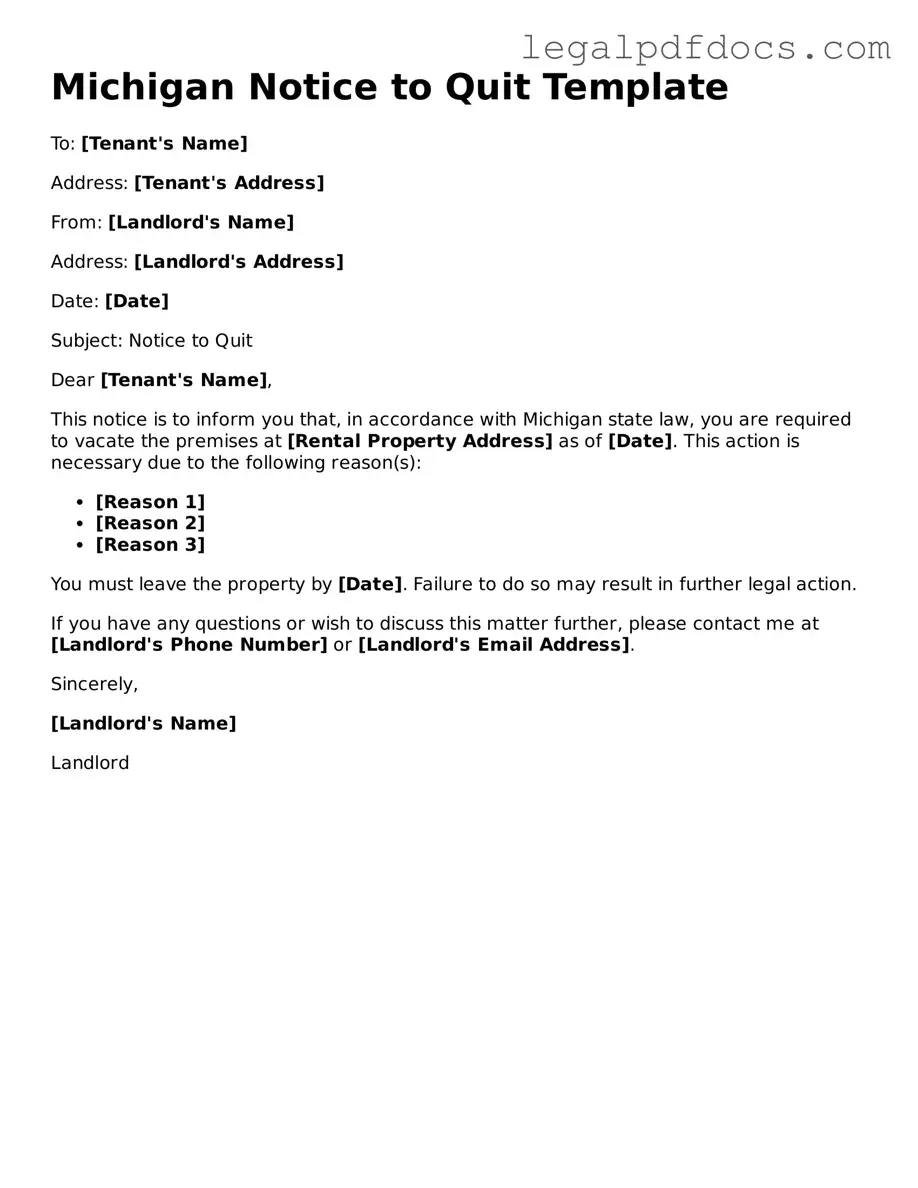The Michigan Notice to Quit form serves as a crucial document in the landlord-tenant relationship, particularly when disputes arise over lease agreements. This form is typically used by landlords to formally notify tenants that they must vacate the rental property. It outlines the reasons for the eviction, whether due to non-payment of rent, lease violations, or other breaches of the rental agreement. Importantly, the form must adhere to specific state laws regarding notice periods, which can vary depending on the circumstances surrounding the eviction. For instance, a tenant may receive a different notice period for failing to pay rent compared to other lease violations. This document not only protects the rights of landlords but also ensures that tenants are informed of their obligations and the potential consequences of failing to comply. Understanding how to properly fill out and serve a Notice to Quit is essential for both parties, as it sets the stage for any subsequent legal proceedings, should they arise. Familiarity with this form can help both landlords and tenants navigate the complexities of eviction processes in Michigan.
